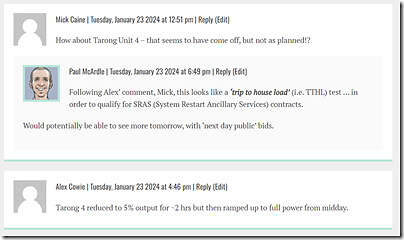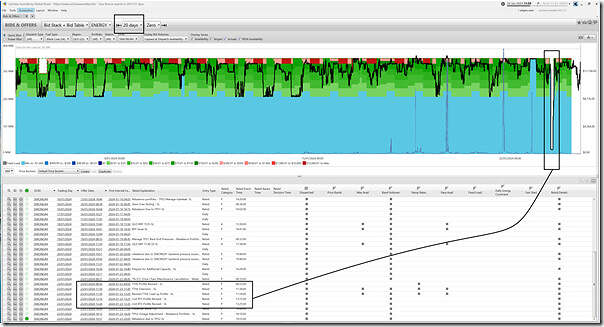Whilst I have the ‘Bids & Offers’ widget in ez2view open, to report on Tarong unit 2’s outage, I’m reminded of a question posed yesterday about Tarong unit 4 on the tail end of my article about Millmerran’s outage here:
So I quickly flip to sister unit TARONG#4 and see what’s visible in terms of operations over the past 30 days, including bids:
So the bid data confirms my hunch yesterday … and, contrary to what I think Mick was thinking yesterday (i.e. that there was some kind of outage that was not planned – which would be a bad thing), what happened yesterday would be a (very) good thing!
Some thermal units have the ability to ‘trip to house load’ (TTHL) as an additional safety measure for the grid as a whole:
1) It enables them, if there is some grid disturbance (e.g. major frequency disturbance), to trip down very quickly to minimal load, in order that they can ramp quickly to help restore system load in the event of a blackout.
2) One high profile case where this worked well was on 25th May 2021 following the initial explosion at Callide C4 catastrophe (which resulted in all units at Callide tripping, contributing to under-frequency load shedding and islanding and so on…)
(a) in this case, as Allan noted here, it was the Stanwell Power Station units that successfully tripped to house load and hence helped with faster-than-otherwise restoration of load.
(b) there are a number of units who are (like this) contracted for SRAS (System Restart Ancillary Services) to provide services like this.
3) I am assuming that what happened at TARONG#4 was a test of the capability – required to justify ongoing payments.




Leave a comment